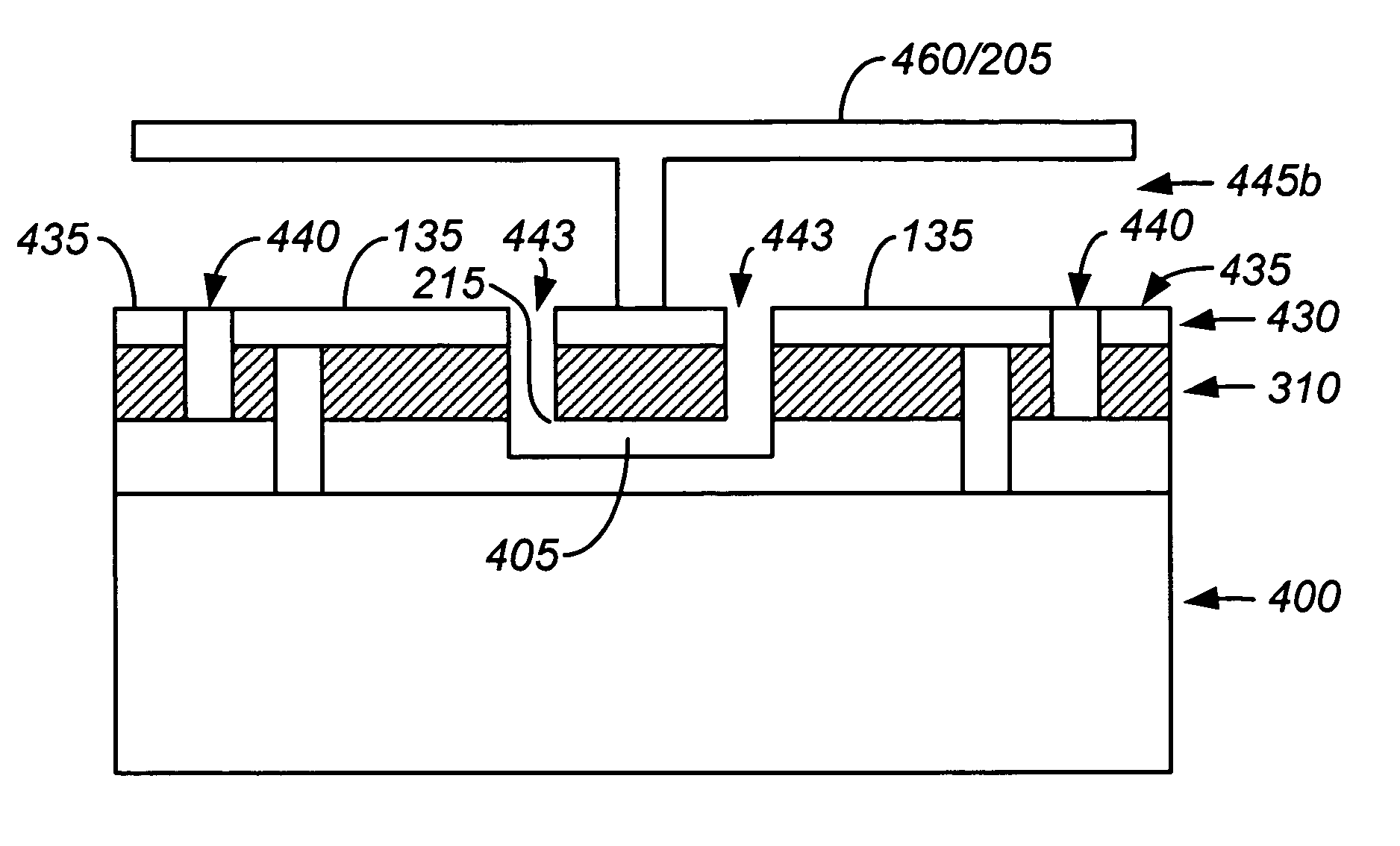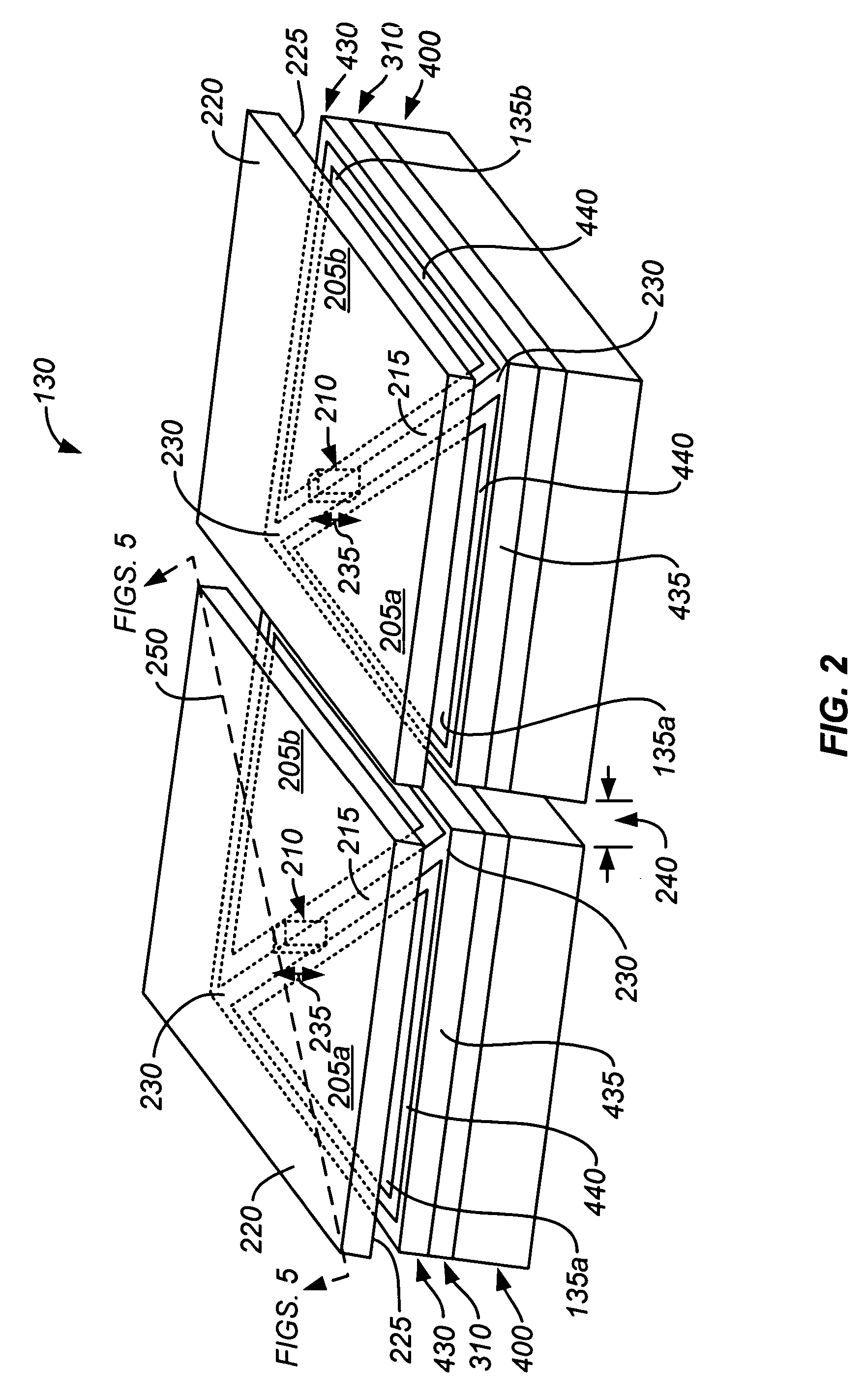Mirror structure with single crystal silicon cross-member
a mirror structure and silicon cross-member technology, applied in the field of spatial light modulators, can solve the problems of virtually no memory effect and fracture, and achieve the effects of fewer micro defects and cracks, strong and reliable, and no memory
- Summary
- Abstract
- Description
- Claims
- Application Information
AI Technical Summary
Benefits of technology
Problems solved by technology
Method used
Image
Examples
Embodiment Construction
Spatial Light Modulator Overview
[0030]Referring now to FIG. 1, there is shown a schematic diagram that illustrates the general architecture of a SLM 100 according to one embodiment of the invention. In this example, the SLM 100 has three layers. The first layer is a mirror array 105, the second layer is an electrode array 110, and the third layer is a layer of control circuitry 115.
[0031]In one embodiment, the mirror array 105 is fabricated from a first substrate / layer 120 that, upon completion of fabrication, is a single material, such as single crystal silicon in the SLM 100. The mirror array 105 has a plurality of deflectable micro mirrors 130.
[0032]The electrode array 110 has a plurality of electrodes 135 for controlling the micro mirrors 130. Each electrode 135 is associated with a micro mirror 130 and controls the deflection of that micro mirror 130. Addressing circuitry allows selection of a single electrode 135 for control of the particular micro mirror 130 associated with t...
PUM
| Property | Measurement | Unit |
|---|---|---|
| distance | aaaaa | aaaaa |
| temperature | aaaaa | aaaaa |
| sizes | aaaaa | aaaaa |
Abstract
Description
Claims
Application Information
 Login to View More
Login to View More - R&D
- Intellectual Property
- Life Sciences
- Materials
- Tech Scout
- Unparalleled Data Quality
- Higher Quality Content
- 60% Fewer Hallucinations
Browse by: Latest US Patents, China's latest patents, Technical Efficacy Thesaurus, Application Domain, Technology Topic, Popular Technical Reports.
© 2025 PatSnap. All rights reserved.Legal|Privacy policy|Modern Slavery Act Transparency Statement|Sitemap|About US| Contact US: help@patsnap.com



